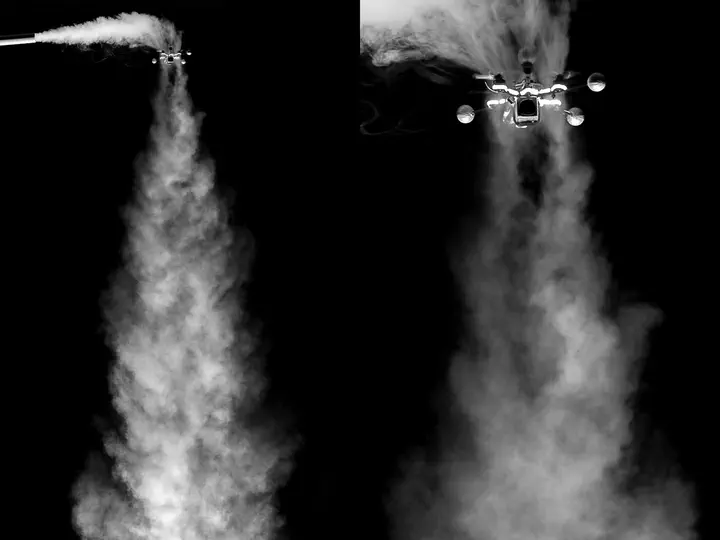Robotics meets Fluid Dynamics: A Characterization of the Induced Airflow around a Quadrotor
 Image Credit: Leonard Bauersfeld
Image Credit: Leonard Bauersfeld
Abstract
The widespread adoption of quadrotors for diverse applications, from agriculture to public safety, necessitates an understanding of the aerodynamic disturbances they create. This paper introduces a computationally lightweight model for estimating the time-averaged magnitude of the induced flow below quadrotors in hover. Unlike related approaches that rely on expensive computational fluid dynamics (CFD) simulations or drone specific time-consuming empirical measurements, our method leverages classical theory from turbulent flows. By analyzing over 16 hours of flight data from drones of varying sizes within a large motion capture system, we show for the first time that the combined flow from all drone propellers is well-approximated by a turbulent jet after 2.5 drone-diameters below the vehicle. Using a novel normalization and scaling, we experimentally identify model parameters that describe a unified mean velocity field below differently sized quadrotors. The model, which requires only the drone’s mass, propeller size, and drone size for calculations, accurately describes the far-field airflow over a long-range in a very large volume which is impractical to simulate using CFD. Our model offers a practical tool for ensuring safer operations near humans, optimizing sensor placements and drone control in multi-agent scenarios. We demonstrate the latter by designing a controller that compensates for the downwash of another drone, leading to a four times lower altitude deviation when passing below.